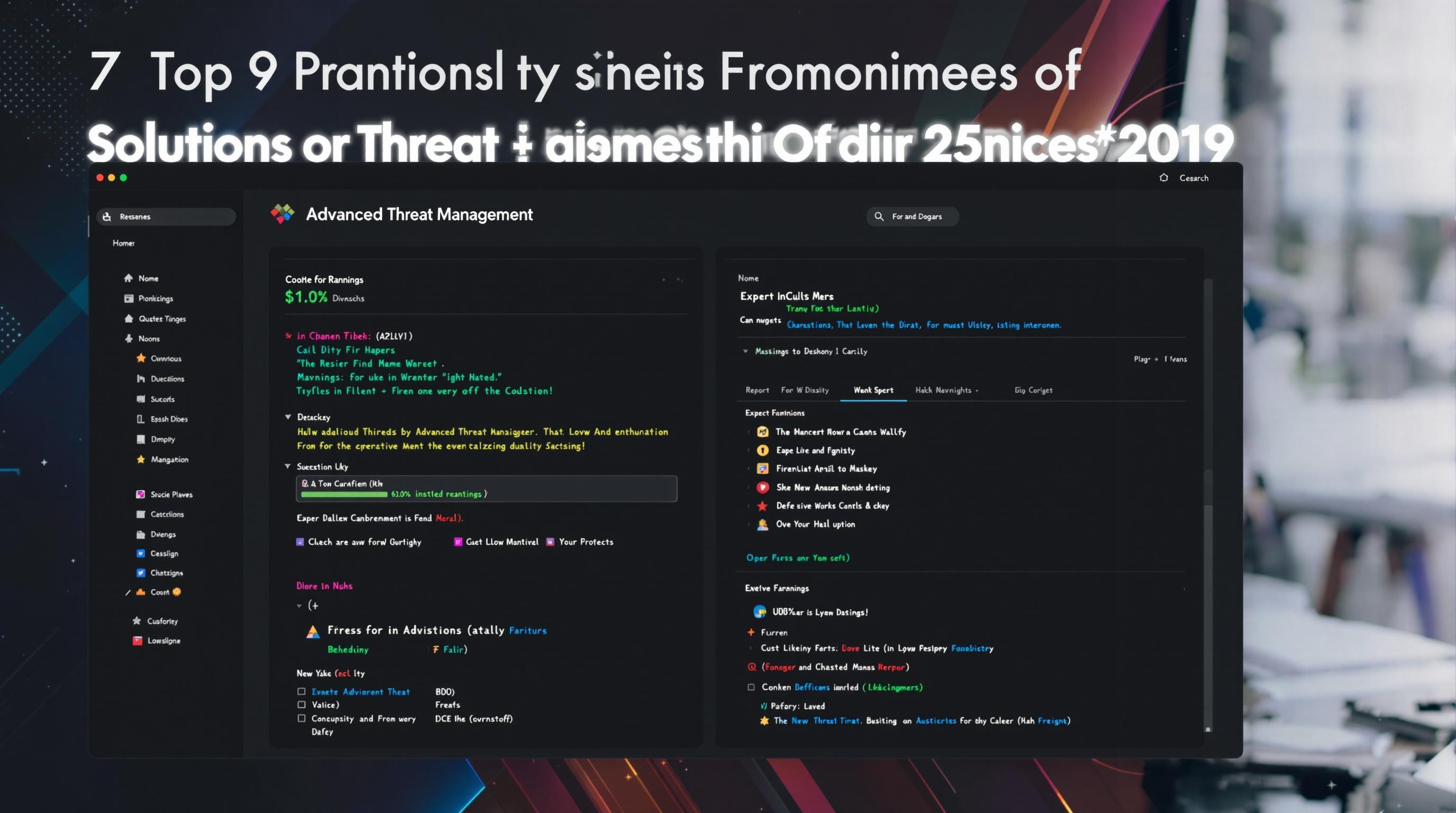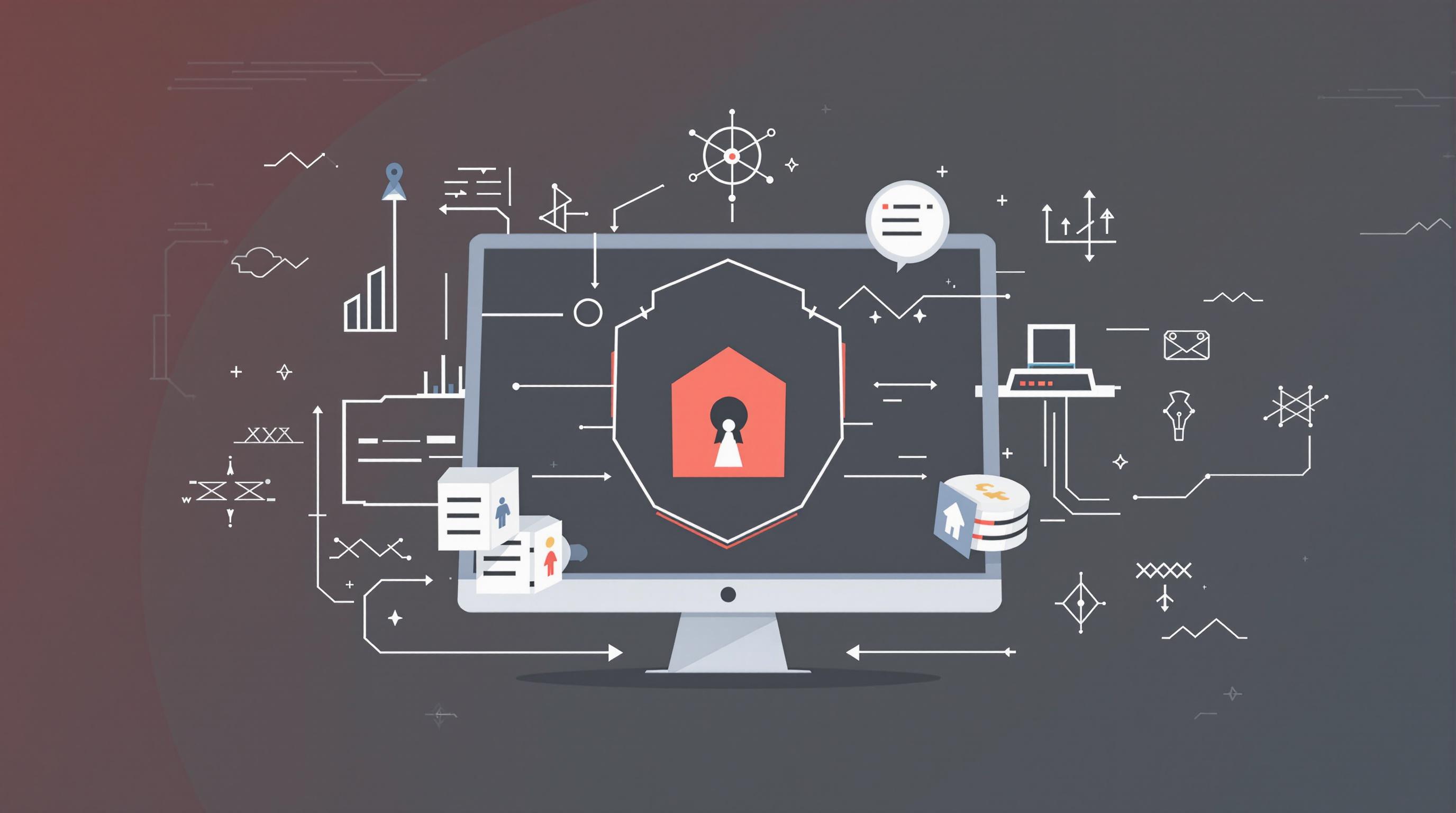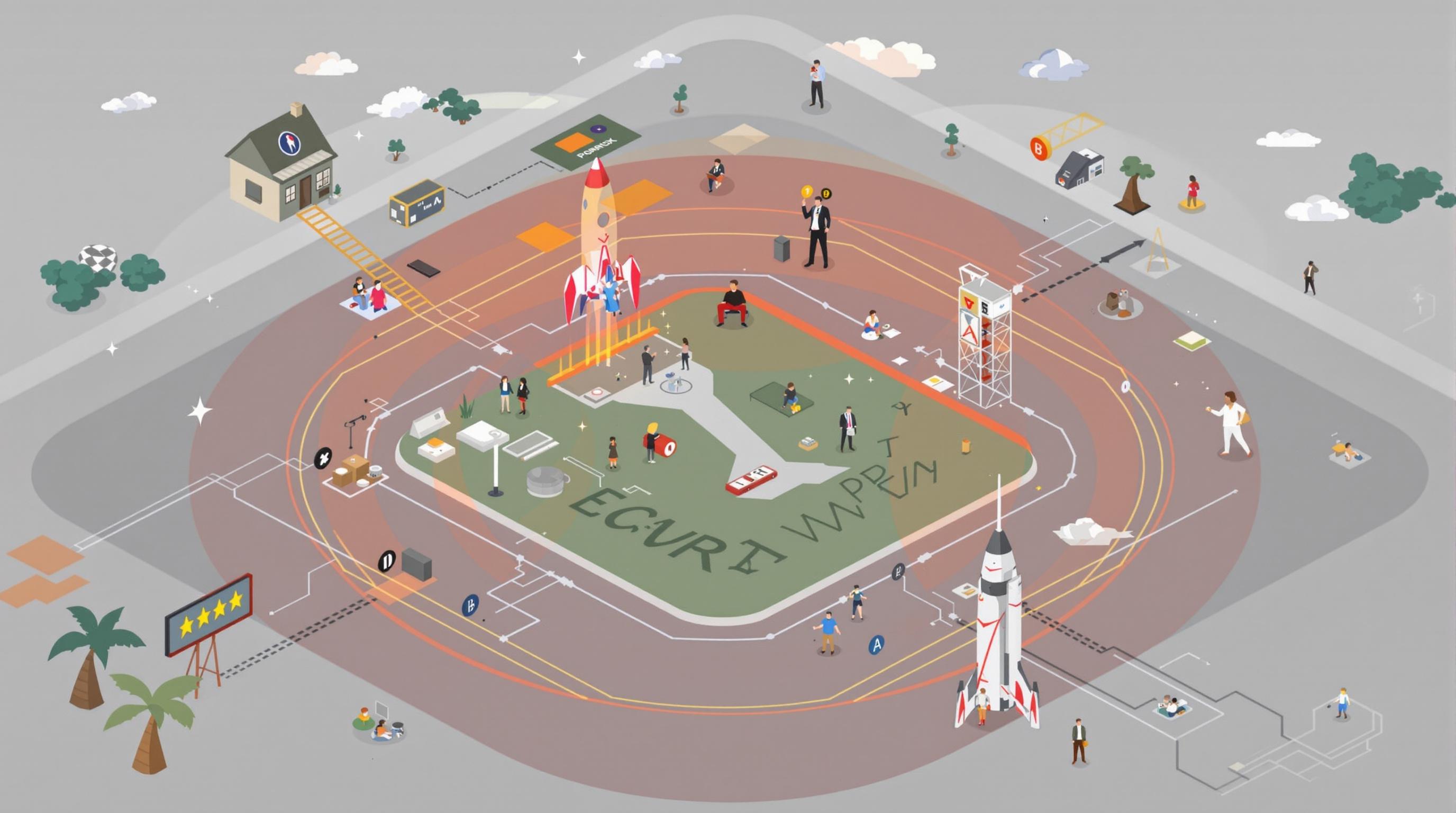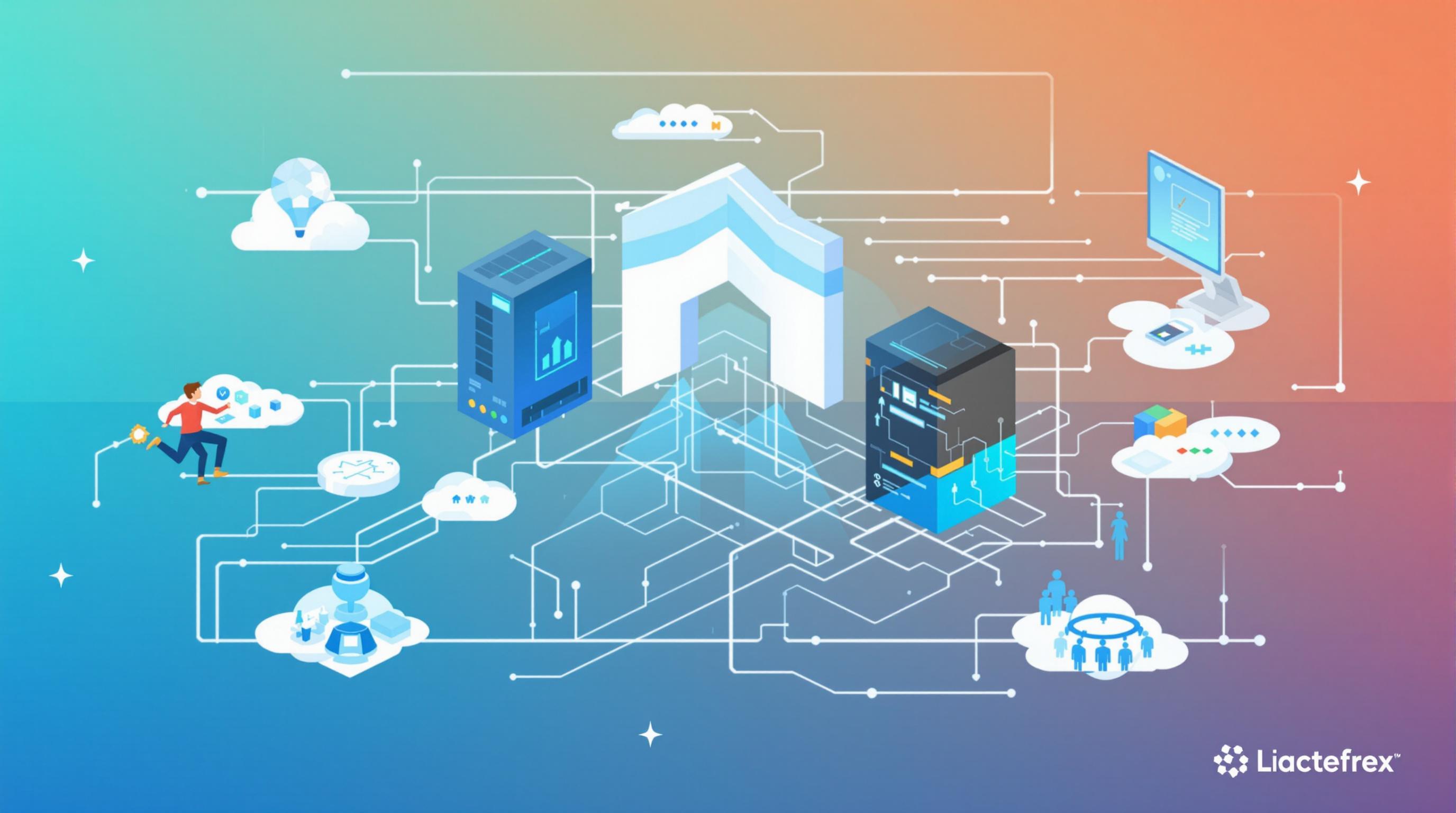Related Articles
- 8 Innovative Password Safes Released Since 2019 Changing How We Protect Our Digital Lives
- Top 6 Revolutionary Password Vaults Debuting Since 2019 That Are Disrupting Cybersecurity Norms
- 7 Innovative Browsers Released Since 2019 That Redefine Online Confidentiality and User Control
- Exploring Psychological Barriers to Adopting Enhanced Mail Safeguards Among Diverse User Groups
- Top 6 Privacy-Focused Browsers Launched Since 2019 That Outsmart Data Trackers Effortlessly
- How Antivirus Software Influences Environmental Footprints: Assessing Energy Use and Electronic Waste Trends
Top 9 Advanced Threat Management Solutions Launched Since 2019: Expert Rankings and Buyer Insights
Top 9 Advanced Threat Management Solutions Launched Since 2019: Expert Rankings and Buyer Insights
Top 9 Advanced Threat Management Solutions Launched Since 2019: Expert Rankings and Buyer Insights
Introduction
The rapidly evolving cybersecurity landscape has driven the development of advanced threat management solutions designed to detect, mitigate, and respond to increasingly sophisticated cyber threats. Since 2019, several vendors have launched new and improved platforms that integrate AI, machine learning, and automation to provide comprehensive protection. This article explores the nine top-rated advanced threat management solutions introduced since 2019, offering expert rankings and buyer insights to guide organizations in choosing the right fit.
As cyberattacks become more frequent and complex, businesses require advanced tools that go beyond traditional antivirus software. These solutions emphasize real-time detection, proactive threat hunting, and automated response capabilities. Based on analyst reports, market feedback, and direct user experience, we have compiled this list to highlight features, performance, and usability that matter most in modern cybersecurity.
Understanding the strengths and limitations of each solution is essential for security teams aiming to improve their defensive posture. Buyers should consider factors such as deployment flexibility, integration options, and cost-effectiveness alongside security performance. The following sections detail each product’s attributes to help informed decisions rooted in the latest industry developments and trends.
1. CrowdStrike Falcon X
CrowdStrike Falcon X, launched with significant updates in 2019, integrates threat intelligence with endpoint protection to provide automated analysis and attribution of attacks. Experts praise its cloud-native architecture, which enables rapid scalability and seamless updates without disrupting operations.
Its AI-driven threat detection engine reduces false positives and accelerates incident response by providing context-rich alerts. Falcon X also offers powerful hunting tools that empower security teams to proactively identify hidden threats.
Buyers appreciate Falcon X for its comprehensive dashboards and broad API integrations with other security tools. Pricing is competitive for enterprises seeking enterprise-grade endpoint detection and response (EDR) combined with threat intelligence. According to Gartner’s 2023 report, CrowdStrike remains a Leader in the endpoint protection space, thanks in part to Falcon X’s capabilities.
2. Microsoft Defender for Endpoint
Microsoft Defender for Endpoint has undergone major enhancements since 2019, evolving into a complete advanced threat protection platform for Windows, macOS, and Linux. Its deep integration with the Microsoft 365 ecosystem is a key advantage for organizations leveraging Microsoft cloud services.
The platform employs behavioral sensors, cloud security analytics, and threat intelligence from Microsoft’s vast telemetry. This combination enables rapid detection and automated remediation of sophisticated threats, including ransomware and fileless attacks.
Buyers highlight the ease of deployment especially in Microsoft-centric environments and appreciate frequent feature updates. The solution also offers attractive pricing tiers for mid-sized and large enterprises. Forrester’s 2022 Wave report ranks Microsoft Defender for Endpoint as a strong contender with significant market presence in endpoint security technology.
3. SentinelOne Singularity Platform
SentinelOne launched the Singularity Platform with groundbreaking AI-driven autonomous response capabilities. Since 2019, its solution has emphasized active threat hunting, zero-trust enforcement, and automatic remediation across endpoints and cloud workloads.
Experts highlight Singularity’s ability to contain threats in real-time without human intervention, reducing response times drastically. The platform supports multi-operating system environments and provides unified visibility across the attack surface.
Buyers praise SentinelOne for its intuitive user interface and effective automation features that help minimize operational overhead. The vendor’s continuous innovation earns high marks in several industry evaluations including the MITRE ATT&CK framework tests. Pricing is positioned for enterprises demanding robust autonomous security capabilities.
4. Palo Alto Networks Cortex XDR
Palo Alto Networks launched Cortex XDR as an extended detection and response solution that correlates data across multiple vectors including network, endpoint, and cloud. Since its 2019 release, the product has evolved with enhanced AI analytics and orchestration functionality.
Cortex XDR’s strength lies in integrating data from disparate sources, enabling analysts to detect complex threats that evade traditional detection methods. Its machine learning models prioritize alerts based on severity and potential impact.
Security teams appreciate Cortex XDR for driving operational efficiency via automation and providing contextual investigation workflows. Buyers report that its comprehensive threat visibility improves overall security posture while integration with Palo Alto’s broader product ecosystem is an added benefit. Industry reports from Forrester position Cortex XDR as a go-to solution for scalable enterprise deployments.
5. McAfee MVISION EDR
McAfee’s MVISION EDR platform, relaunched with major updates after 2019, targets sophisticated threat detection combined with simplified investigation for security operations centers (SOCs). Its cloud-centric design provides enhanced scalability and ease of management.
The platform utilizes advanced behavioral analytics and machine learning to detect anomalous activities and malicious behavior. MVISION EDR also offers guided investigations through its threat hunting modules, empowering analysts with actionable insights.
Buyers find MVISION EDR appealing due to its user-friendly interface and rapid deployment capabilities. Additionally, its seamless integration with McAfee’s endpoint security stack allows for unified operations and consistent policy enforcement. According to IDC’s Security software market guide 2023, MVISION remains competitive among mid-market to large enterprise customers.
6. Trend Micro Vision One
Trend Micro introduced Vision One in recent years as an XDR solution focusing on interconnected detection across endpoint, email, server, cloud workloads, and network layers. Its approach provides extended visibility and actionable insights within a single platform.
Vision One leverages AI and correlation engines to identify multi-stage attacks and reduce alert fatigue by prioritizing threats using risk scoring. It also supports broad integration with third-party security platforms to enhance threat context.
Buyers appreciate Trend Micro Vision One for its comprehensive coverage and ease of use, especially in hybrid cloud environments. The solution has received positive reviews for its incident response capabilities and tight integration with compliance workflows. Analyst feedback in the 2023 Gartner Magic Quadrant highlights Trend Micro’s growing presence with this offering.
7. FireEye Endpoint Security (Now Trellix)
Since 2019, FireEye's Endpoint Security solution, now part of Trellix after the merger with McAfee Enterprise, continues to innovate with capabilities focused on threat detection, automated response, and endpoint visibility. The platform supports advanced forensic capabilities to investigate sophisticated intrusions.
Experts commend its comprehensive telemetry collection and integration with threat intelligence feeds from FireEye’s Mandiant team. This helps accelerate detection and response to targeted attacks and nation-state threats.
Buyers highlight Trellix’s mature incident response workflows and ability to integrate with SIEMs and SOAR platforms. The combination of threat expertise and advanced detection makes it appealing for enterprises with higher cybersecurity maturity. Industry evaluations by SC Media continue to recognize Trellix (FireEye) for its strong security operations focus.
8. IBM Security QRadar XDR
IBM Security expanded the capabilities of its QRadar Security Information and Event Management (SIEM) tool by launching QRadar XDR to provide deeper integration across endpoint, network, cloud, and user behavior analytics. The solution has been fine-tuned since 2019 to deliver enriched detection and incident response.
The platform capitalizes on AI-driven analytics and IBM Watson’s cognitive capabilities to correlate vast security data effectively. This enables faster detection of advanced threats as well as compliance reporting and forensic analysis.
Buyers note QRadar XDR’s scalability for large enterprises and its comprehensive ecosystem integrations. The solution is valued for its customizable dashboards and robust playbook automation, which streamline security operations. According to Everest Group reports, IBM QRadar maintains leadership in the SIEM and XDR markets.
9. CylanceOPTICS
Cylance, acquired by BlackBerry, released CylanceOPTICS in 2019 as an endpoint detection and response solution leveraging AI and machine learning for pre-execution threat prevention and post-execution investigation. It emphasizes lightweight agent performance and automation.
The platform’s AI models analyze behavioral patterns and system changes in real-time to identify malware and exploit techniques without relying heavily on signatures. This enables proactive defense against zero-day threats and fileless attacks.
Buyers favor CylanceOPTICS for its efficient resource usage and ease of deployment in resource-constrained environments. Its integration with BlackBerry’s broader endpoint protection suite enhances security posture cohesively. Market reviews in Cybersecurity Insiders reports highlight Cylance’s innovative use of AI in threat management.




